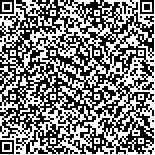下载中心
优秀审稿专家
优秀论文
相关链接
摘要

辐射定标是地表温度反演的关键环节。在实际应用中,定标参数的选取直接影响辐射定标结果。由于卫星在轨定标系统的灵敏度会随时间发生改变,这使得实际的辐射定标存在不确定性。本文基于单波段热红外辐射传输方程给出了辐射定标影响地表温度反演的敏感性分析模型,并重点对HJ-1B热红外波段的辐射定标问题及其对地表温度反演的影响进行讨论和分析。敏感性分析模型显示,在一般的情形下,辐射定标偏差与地表温度反演误差的比值在数值上约为1∶11,即0.1个单位(W·m-2·sr-1·μm-1)的辐射定标偏差可能引起1.1 K左右的温度反演误差。由于对HJ-1B热红外波段定标参数的更新存在滞后,即使仅考虑相邻年份间的定标偏差,相应的地表温度平均绝对误差也在1.0-2.0 K左右。在更严重的情形下,因辐射定标偏差引起的地表温度误差甚至高达5.0 K以上。同时,分析结果也表明对HJ-1B的存档影像,无论使用其头文件中的定标参数还是当年公布的定标参数,定标后辐射亮度值的偏差均存在一定的不稳定性。针对当前在HJ-1B定标参数更新方面的不足,本文假定传感器辐射性能变化是匀速稳定的,相应地提出了线性内插修正法和线性外推法两个定标参数估计/修正方案。通过线性内插的方法进行辐射定标修正后,在一定程度上减小了误差的不稳定性,与MODIS B31波段的亮温相比,偏差在1.0 K以内(约为0.5 K)。当定标参数尚未公布时,由线性外推法修正后的辐射定标结果所得亮温的偏差约为1.0 K。与在大亚湾核电站附近海域进行的一次卫星同步观测(2011年12月18日)相比,经两个方案修正后的海表温度偏差分别约为0.2 K和0.7 K。案例分析的结果表明,在现阶段,线性内插修正法和线性外推法是简单有效的,可供用户在实际应用中参考和使用。
Radiometric calibration is a procedure to obtain at-sensor radiance from digital number records. Accurately calibrated radiation is critical in retrieving brightness temperatureand Land Surface Temperature (LST). Uncertainty in radiometric calibration typically becomes increasingly obvious because of the decay of the sensor during in-orbit operation. In practice, radiometriccalibration is determined by calib-ration parameters. In this study, radiometric calibration of the HJ-1B thermal channel and the effects of calibration uncertainty on LST retrieval are investigated.
A sensitivity model based on the radiative transfer model is proposed to assess the effects of radiometric calibration on LST retrieval. The calibration parameters for HJ-1B imagery are not updated in a timely manner (always annually); this lack of timeliness inevitably results in errors in radiometric calibration. Therefore, two methods are proposed for two specific cases to estimate radiation properly. These two methods are linear interpolation and linear extrapolation.
The sensitivity model shows that in terms of the numerical value, the ratio of radiometric calibration deviation to the LST error is approximately 1:11. Under a moderate condition, a 0.1 (W·m-2·sr-1·μm-1) uncertainty in radiometric calibration may result in an error of 1.1 K in the final LST result. Simulations based on the calibration parameters of the HJ-1B thermal channel are conducted. The errors in radiometric calibration result from the improper selection of calibration parameters. Generally, even the calibration differences between two neighboring years are considered. The mean absolute errors of LST that approximate 1.0-2.0 K and highly significant LST errors (larger than 5.0 K) could be obtained under poor conditions. Case studies show that the calibration parameters in the header file of the HJ-1B imagery are always the parameters updated in the previous year or even two years ago. The calibration parameters for the HJ-1B thermal channel have not been updated since 2012. Thus, two estimation methods based on linear models are proposed to obtain radiometric calibration properly. A case study illustrates that under the current situation, the proposed estimation methods are simple but effective. Therefore, they are recommended to general users as references and for application.
The calibration parameters in the header file of the HJ-1B imagery are always not updated timely and frequently. Thus, uncertainty in the radiometric calibration of the HJ-1B thermal channel is inevitable. The LST errors resulting from radiometric calibration uncertainty are influenced by several factors, including surface characteristics (i.e., temperature and emissivity) and atmospheric conditions. The actual effects depend on seasonal and regional variations, which emphasize the challenge of accurately obtaining LST from the HJ-1B thermal channel. Two methods are proposed and assessed for the radiometric calibration of the HJ-1B thermal channel. Although the estimation methods are generally acceptable because of their simplicity and effectiveness, additional efforts are required to clarify the actual performance of the sensor. General users should consider radiometric calibration uncertainty in quantitative applications of the HJ-1B thermal imagery.

